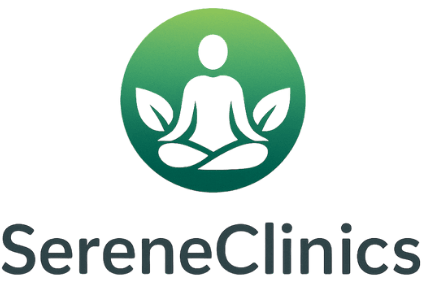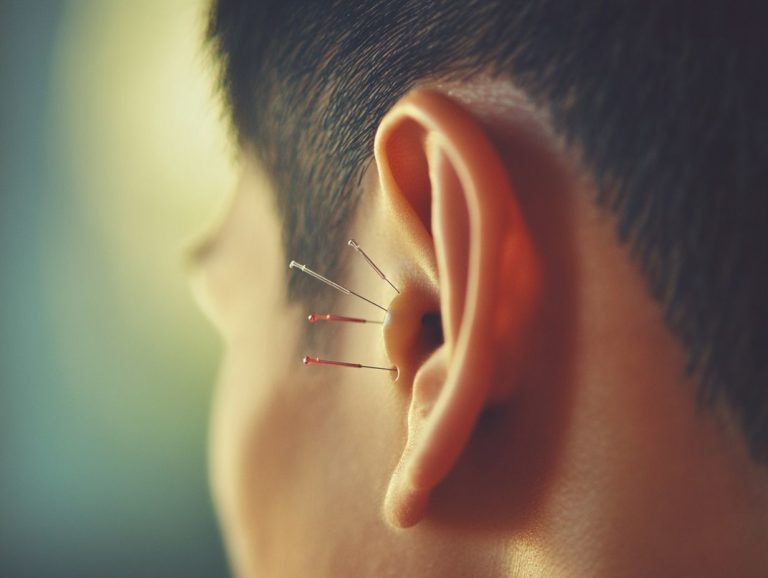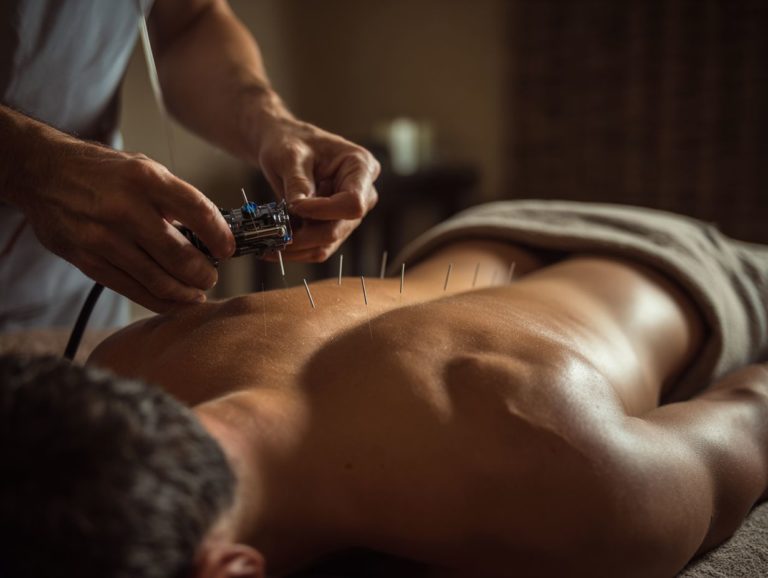Opioid Alternatives: Acupuncture for Chronic Pain Relief
Long-term pain impacts millions, leading many to request opioid prescriptions for relief. The CDC points out that there is an increasing demand for treatments that do not involve opioids. Acupuncture stands out as an effective, nonpharmacologic therapy for managing acute pain and chronic pain alike. This article looks into how acupuncture can be an effective option for managing pain. It explains the advantages, supporting evidence, and how it can be included in your healthcare plan. Find a complete way to relief that focuses on your health.
Key Takeaways:
Contents
- 1 What is Acupuncture?
- 2 Benefits of Acupuncture for Chronic Pain
- 3 Acupuncture Pain Relief Statistics
- 4 Acupuncture Techniques for Pain Relief
- 5 Integrating Acupuncture into Pain Management Plans
- 6 Potential Risks and Considerations
- 7 Finding a Qualified Acupuncturist
- 8 Frequently Asked Questions
- 8.1 What are opioid alternatives and how can acupuncture help with chronic pain relief?
- 8.2 Is acupuncture safe for chronic pain relief and how does it compare to opioid use?
- 8.3 What conditions can acupuncture help with for chronic pain relief?
- 8.4 How does acupuncture work to relieve chronic pain?
- 8.5 Are there any risks or side effects of using acupuncture for chronic pain relief?
- 8.6 How long do the effects of acupuncture last for chronic pain relief?
Understanding Chronic Pain
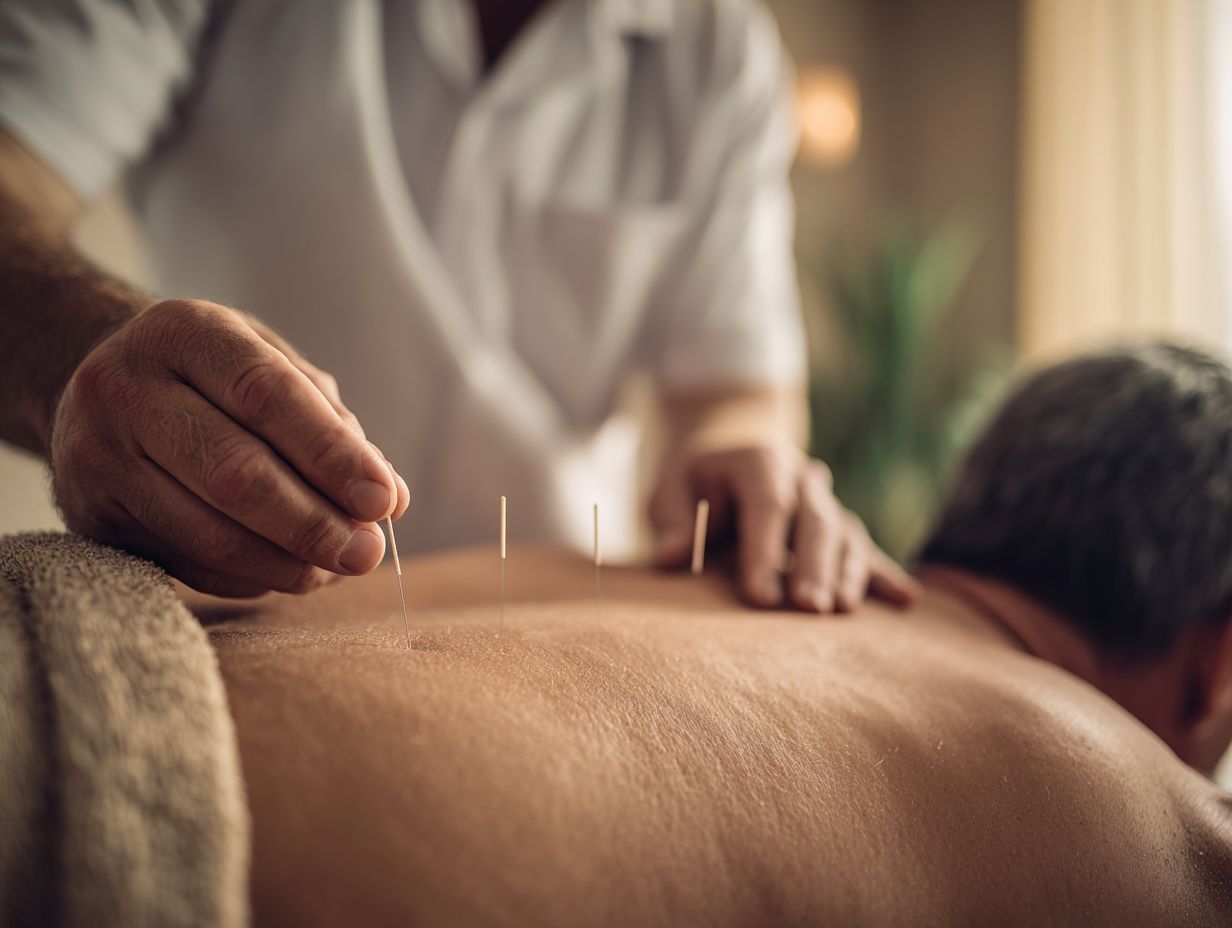
Chronic pain persists for at least 3-6 months and is often tied to conditions like arthritis, fibromyalgia, and low back pain, impacting daily life significantly.
This condition affects nearly 20% of adults globally, creating substantial healthcare and societal challenges. According to research from the Boston University School of Public Health, these challenges are magnified by the complex interaction between societal factors and individual health.
Physiologically, chronic pain results from the nervous system’s altered response to pain signals, where heightened sensitivity occurs due to neuroplastic changes. Common causes include inflammatory diseases, nerve injuries, or ongoing stress and anxiety, which can exacerbate pain perception.
To manage chronic pain effectively, patients may benefit from:
- Cognitive-behavioral therapy
- Physical therapy
- Medications like NSAIDs
For those exploring alternative treatments, assessing acupuncture’s benefits could offer additional insights into how these systems function in personalized treatment plans.
The Role of Opioids in Pain Management
Opioids, while effective for acute pain relief, carry serious risks, including potential for dependence and a dramatic rise in opioid overdose deaths over the past decade.
Prescription opioids such as oxycodone, hydrocodone, and morphine are commonly used for pain management. The CDC reported that in 2021, over 100,000 overdose deaths occurred, largely driven by opioid misuse. According to a respected source from the CDC, understanding the opioid overdose epidemic is crucial for effective prevention strategies.
To mitigate these risks, health professionals can consider non-opioid alternatives like acetaminophen or non-steroidal anti-inflammatory drugs (NSAIDs).
Using a full approach to pain management, such as physical therapy and cognitive behavioral therapy, can improve patient care and cut down on the use of prescription opioids.
What is Acupuncture?
Acupuncture is an ancient method from Traditional Chinese Medicine, recognized for its potential to relieve pain and support general health. To understand how this practice specifically aids in alleviating discomfort, you might explore our deep dive into the mechanisms and methods of acupuncture for pain relief.
History and Origins of Acupuncture
Originating over 2,500 years ago in China, acupuncture has evolved into a widely practiced treatment, with its principles now being supported by modern science.
The foundational theories of acupuncture revolve around the concepts of Qi (energy flow) and meridians (pathways through which energy flows in the body). Practitioners insert fine needles into specific points to balance this energy.
Today, acupuncture is often integrated into complementary medicine, with research demonstrating its effectiveness for conditions like chronic pain, anxiety, and migraines. For instance, studies published in Britannica reveal how traditional Chinese medicine has influenced these contemporary practices.
Today’s healthcare professionals might combine electronic stimulation equipment with conventional needles to improve treatment results. Worth exploring: Smart Electronic Stimulators in Acupuncture highlight the innovative blend of technology with traditional methods, underscoring acupuncture’s importance in current healthcare.
How Acupuncture Works
Acupuncture involves stimulating certain spots on the body to help balance energy flow and support natural healing, offering a different option for pain relief.
The practice focuses on the idea of meridians, which are routes where qi, or life energy, moves. Healthcare providers often report that acupuncture can trigger the release of endorphins, reducing pain perception.
As an example, patients with long-term back pain might feel better after a few sessions, using acupuncture to improve blood flow and reduce muscle tightness.
Adding acupuncture to a pain management plan with physical therapy can improve overall results, providing a complete method for recovery.
Benefits of Acupuncture for Chronic Pain
Studies indicate that acupuncture can greatly help people with long-term pain, often decreasing the need for opioids and improving general well-being. For those looking to delve deeper, personalized treatments are explored in depth, highlighting the range of methods and advantages in our comprehensive guide.
Acupuncture Pain Relief Statistics
Acupuncture Pain Relief Statistics
Effectiveness of Acupuncture: Effect Size of Acupuncture vs Controls
Effectiveness of Acupuncture: Acupuncture Success in Pain Reduction
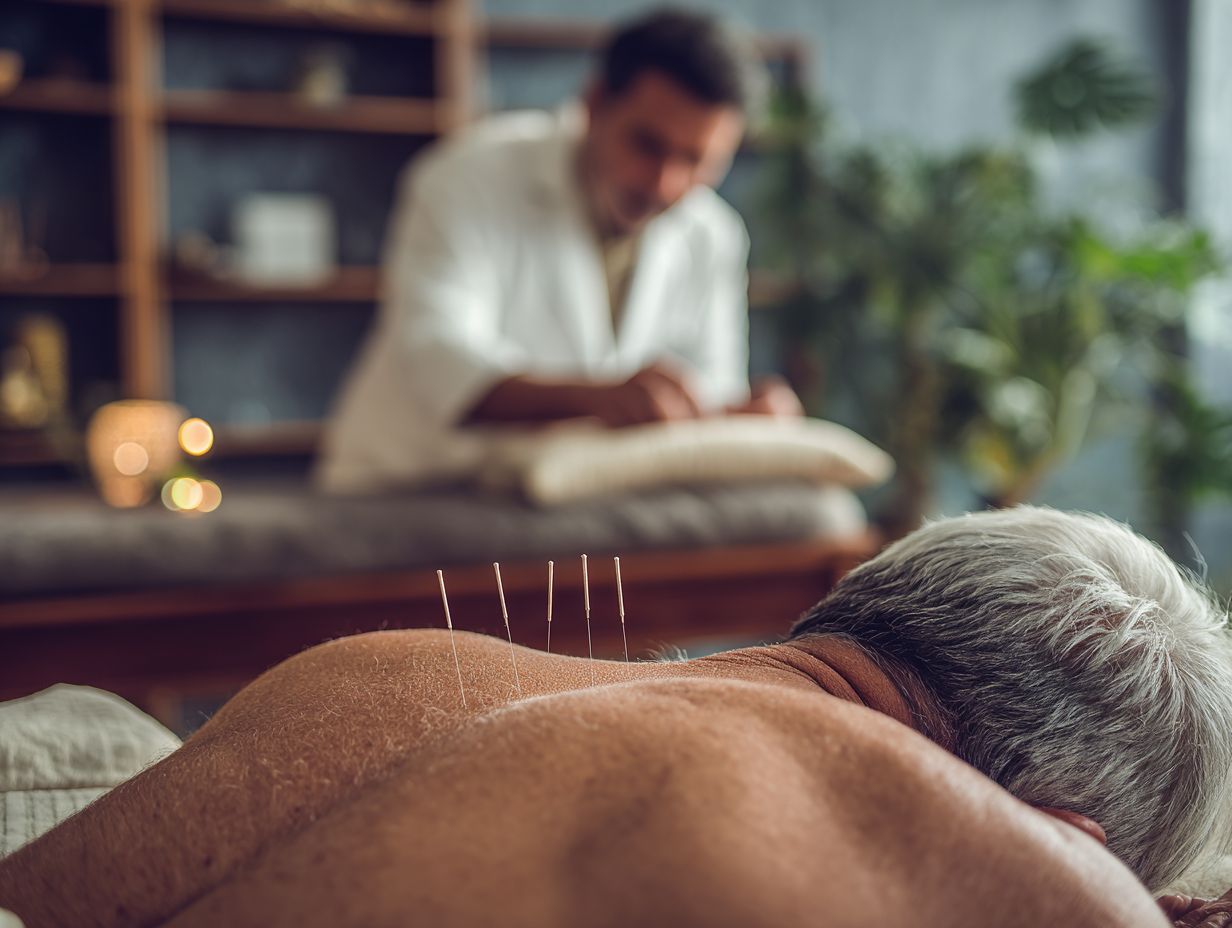
The Acupuncture Pain Relief Statistics show how effective acupuncture is for relieving pain compared to fake treatments and no treatment at all. The data highlights different effect sizes and the proportion of patients experiencing reduced pain, underscoring acupuncture’s potential benefits.
Effectiveness of Acupuncture is evaluated through effect sizes, which measure the magnitude of treatment impact. The data indicates that acupuncture has a 0.23 effect size compared to sham treatments, suggesting a modest but statistically significant benefit of genuine acupuncture over placebo-controlled variants. This finding is important for knowing how acupuncture works beyond psychological or placebo effects.
When compared to no acupuncture, the effect size increases to 0.55, indicating a more substantial improvement in pain relief. This larger effect size suggests that acupuncture significantly alleviates pain compared to patients receiving no treatment, emphasizing the therapeutic potential of acupuncture in clinical settings.
- Acupuncture Success in Pain Reduction: Fifty percent of patients report reduced pain, highlighting acupuncture’s tangible benefits. This substantial proportion reflects acupuncture’s efficacy in addressing pain for half of those treated, offering a viable option for pain management.
- The sham controlled effect size of 0.15 further reinforces the effectiveness of acupuncture, albeit acknowledging the placebo component inherent in treatments involving patient expectations and clinical environment.
The Acupuncture Pain Relief Statistics illustrate acupuncture’s capability to significantly reduce pain, especially compared to no treatment. The effect sizes and patient-reported outcomes present acupuncture as a promising method in the domain of pain management, offering a complementary approach alongside conventional medical treatments.
Evidence-Based Research
Many studies show that acupuncture helps reduce long-term pain. Reviews of the evidence suggest that it provides 30-50% more pain relief compared to groups not receiving treatment.
For instance, a meta-analysis published in the Journal of Pain analyzed 29 randomized controlled trials and found that acupuncture significantly reduced pain levels in chronic back pain patients by an average of 40%. Similarly, a study in the Journal of Headache Pain reported that participants experienced a 50% decrease in migraine frequency after a course of acupuncture.
These studies typically employed controlled settings, measuring pain levels through standardized scales, reinforcing acupuncture’s efficacy as a viable treatment option.
Patient Testimonials and Case Studies
Real-life success stories show how acupuncture has greatly improved pain management for many patients, providing hope when traditional treatments have not worked.
For example, a 45-year-old woman reduced her chronic back pain from an 8 to a 3 after six weekly sessions. Another patient, a 32-year-old man, found relief from migraines, decreasing from two episodes a week to one post-treatment.
Using tools like the AcuGraph Digital Meridian Imaging System helps practitioners tailor treatments, improving their effectiveness. Patients commonly feel better overall and experience less pain. Many also say they sleep better and feel happier after their acupuncture treatments.
Acupuncture Techniques for Pain Relief
Acupuncture includes different methods designed for each person’s needs, enabling practitioners to effectively and thoroughly treat specific pain conditions.
Types of Acupuncture
There are different types of acupuncture, such as traditional Chinese acupuncture, electro-acupuncture, and ear acupuncture. Each type helps with pain relief in its own way.
Traditional Chinese acupuncture focuses on restoring energy balance by inserting thin needles at specific points, often beneficial for chronic muscle pain.
Electro-acupuncture improves traditional techniques by sending electrical currents through needles, which can effectively relieve joint problems and improve muscle recovery.
Ear acupuncture, targeting points on the ear, is particularly useful for stress relief and addiction treatment.
For best results, consider consulting a licensed acupuncturist who can tailor a treatment plan based on your specific needs and conditions.
Specific Points for Chronic Pain
Acupuncture focuses on certain points on the body, like LI4 (Hegu) and PC6 (Neiguan), which are known to help reduce chronic pain and improve overall health.
LI4, located between the thumb and index finger, is often used for headaches and neck pain, acting as a powerful analgesic.
PC6 is located roughly two inches above the wrist on the inner side of the forearm. It helps improve blood flow and is useful for relieving nausea and stomach problems.
Points like ST36, located below the knee, help the immune system and increase energy.
By using treatments from these areas together, practitioners can develop a custom plan to manage ongoing pain, supporting general well-being and harmony in the body.
Integrating Acupuncture into Pain Management Plans
Adding acupuncture to a detailed pain management plan can improve results and lower the need for drugs like opioids.
Consultation with Healthcare Providers
For safe and specific treatment, talk to a healthcare provider before adding acupuncture to your pain management plan.
Talking openly with your doctor helps create a treatment plan for acupuncture that fits your needs. Discuss your specific pain management goals, current medications, and any previous treatments.
For example, if you suffer from chronic back pain, your provider may recommend acupuncture alongside physical therapy. They can help make sure that your acupuncture sessions work well with other treatments, reducing the chance of negative effects.
By working together with your healthcare team, you deal with your current issues and create a complete plan that supports your overall health.
Complementary Therapies

Acupuncture is most effective when used with other treatments like physical therapy, cognitive behavioral therapy, and mindfulness exercises to improve pain management.
For instance, patients suffering from chronic pain often see significant benefits when they undergo acupuncture alongside physical therapy. The acupuncture sessions can help relieve muscle tension, while physical therapy improves strength and mobility.
Cognitive behavioral therapy (CBT) can address the psychological aspects of pain, equipping patients with coping strategies. Using mindfulness practices improves this method, helping patients become more aware of and come to terms with their pain.
These therapies work together to form a complete treatment plan that focuses on both physical and mental health, leading to better results for patients.
Potential Risks and Considerations
Although usually safe, acupuncture has some risks and side effects that patients should know about before beginning treatment.
Side Effects of Acupuncture
Common side effects of acupuncture may include temporary soreness, bruising, and slight bleeding, but serious complications are rare when performed by a qualified practitioner.
These side effects usually resolve within a few hours to a couple of days. It’s important to pick a licensed acupuncturist who follows hygiene rules and uses clean needles to reduce risks.
Talk about any health issues you have before treatment to make sure the approach fits your needs. Certified practitioners often suggest specific aftercare, like drinking more water and getting plenty of rest, to help with recovery and improve benefits.
This personal connection helps reduce side effects and improves the therapeutic experience.
Who Should Avoid Acupuncture?
Certain individuals, such as those with bleeding disorders or specific infections, may need to avoid acupuncture, highlighting the need for careful patient assessment.
Pregnant women, particularly in their first trimester, should consult a healthcare provider before undergoing acupuncture, as certain points may induce labor. Those with compromised immune systems or a history of seizures should also exercise caution.
Patients need to tell their acupuncturist all their medical history, including any medicines they take and any allergies they have. Knowing these conditions protects the patient and makes the treatment work better, focusing on their specific health issues.
Finding a Qualified Acupuncturist
Picking a certified and experienced acupuncturist is important for safe and effective treatment of long-term pain.
Credentials and Certifications
Look for acupuncturists who are certified by recognized boards such as the National Certification Commission for Acupuncture and Oriental Medicine (NCCAOM).
Along with NCCAOM certification, make sure the acupuncturist has a license for your state, since rules vary by state. Consider their education; many acupuncturists have a master’s or doctoral degree in Oriental medicine.
It’s also beneficial to inquire about any additional specialties, such as Chinese herbal medicine or sports acupuncture, which can indicate a broader scope of knowledge.
Think about checking reviews or asking others for recommendations to help you choose a well-regarded practitioner in your area.
Questions to Ask Before Treatment
Before starting treatment, patients should ask acupuncturists about their background, methods, and treatment plans to make sure they are a good match.
They might begin by asking about the acupuncturist’s education and certification, confirming they have the required skills. Patients should ask the acupuncturist about their treatment methods to see if these match the patient’s own beliefs and preferences.
Specific questions include:
- “How do you assess a patient’s condition?”
- “What techniques do you use?”
It’s helpful to ask about the typical patient outcomes and recovery expectations to set realistic goals for treatment.
Summary of Acupuncture as an Opioid Alternative
More patients are looking for other options besides opioid treatment, and acupuncture is becoming a popular choice backed by research and positive patient experiences.
Research indicates that acupuncture can effectively reduce pain and improve functionality for various conditions, including chronic back pain and headaches.
A study published in the Journal of Pain showed that patients receiving acupuncture experienced a 50% reduction in pain levels. Anecdotal evidence supports this; for example, a patient with fibromyalgia reported significant improvements in pain management and overall well-being after regular acupuncture sessions.
The World Health Organization acknowledges that acupuncture can help with over 100 conditions, offering a practical choice for people who want to reduce pain without using opioids.
Future Directions in Pain Management
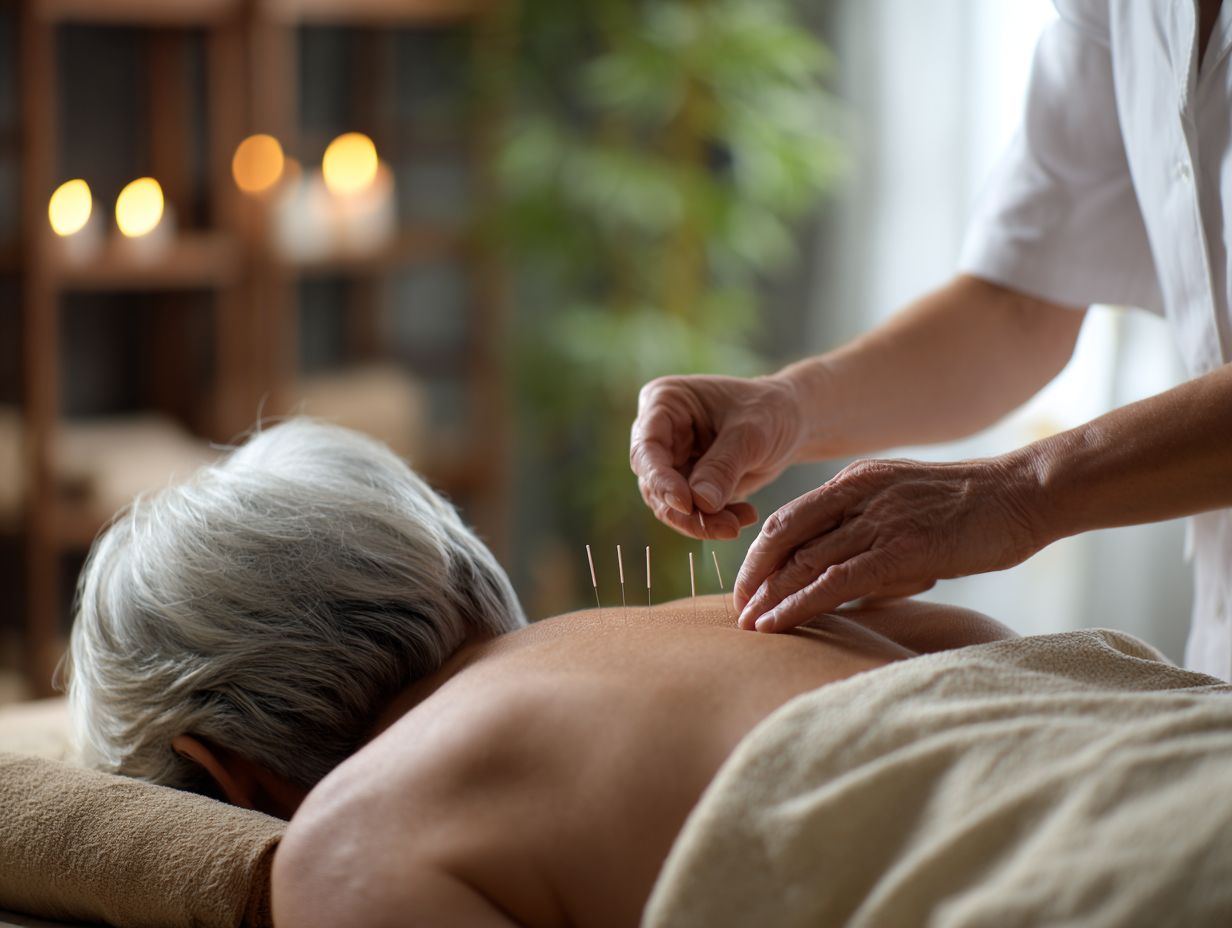
Pain management will probably focus on methods that mix regular medical treatments with additional therapies like acupuncture.
Yoga and mindfulness practices are gaining recognition for their effectiveness in managing chronic pain. Studies show that yoga helps people become more flexible and feel less pain. It can be a useful addition to regular medical care.
Using nutritional treatments, like anti-inflammatory diets, can improve patient results. Physicians can recommend specific dietary changes that promote healing, exemplified by increasing omega-3 fatty acids found in fish and flaxseeds.
By combining these methods, patients receive a complete treatment that deals with both the symptoms and the root causes of pain.
Promoting Whole-Body Methods for Pain Management
Supporting patients in using complete pain relief methods can greatly better their results and lower the dangers linked with opioid use.
Using therapies like acupuncture and physical therapy with lifestyle changes creates a complete method for managing pain.
For instance, acupuncture can reduce inflammation and improve circulation, providing immediate relief for some patients. Pair this with physical therapy, which focuses on strengthening muscles and improving mobility, to address the root causes of pain.
Changes in daily habits-such as exercising regularly, eating a balanced diet, and managing stress-can improve general health.
By weaving together these various strategies, patients may experience a more sustainable reduction in pain while lowering their reliance on medication.
Frequently Asked Questions
What are opioid alternatives and how can acupuncture help with chronic pain relief?
Opioid alternatives refer to non-medication treatments for pain, such as acupuncture. Acupuncture is a traditional Chinese medicine practice that involves inserting thin needles into specific points on the body to relieve pain and promote overall wellness.
Is acupuncture safe for chronic pain relief and how does it compare to opioid use?
Acupuncture is generally considered a safe and non-invasive treatment for chronic pain relief. Acupuncture doesn’t lead to addiction or overdose like opioids can, so it is a safer choice for managing pain over a long period.
What conditions can acupuncture help with for chronic pain relief?
Acupuncture has been shown to be effective in treating a variety of conditions that cause chronic pain, including back pain, osteoarthritis, fibromyalgia, and migraines. It can also be used for general pain relief and relaxation.
How does acupuncture work to relieve chronic pain?
Acupuncture stimulates the body’s nervous system and releases natural pain-relieving chemicals, such as endorphins. It also improves blood flow and can reduce inflammation, which can help alleviate pain and promote healing.
Are there any risks or side effects of using acupuncture for chronic pain relief?
While acupuncture is generally safe, some people may experience minor side effects such as mild bruising, soreness, or bleeding at the needle site. You should get care from a qualified acupuncturist to reduce possible risks.
How long do the effects of acupuncture last for chronic pain relief?
The effects of acupuncture for chronic pain relief can vary from person to person. Some patients may experience immediate relief, while others may require multiple sessions to see significant improvement. The length of time pain relief lasts can vary based on how serious the pain is and what kind of pain it is.

Sheetal Sharda has a background in CS. She got an interest in Holistic living back in 2018, and has since started exploring more into Naturapathy, Holistic Living, Yoga, and more. She got inspired to start SereneClinics to help people find reliable centers across the world.
